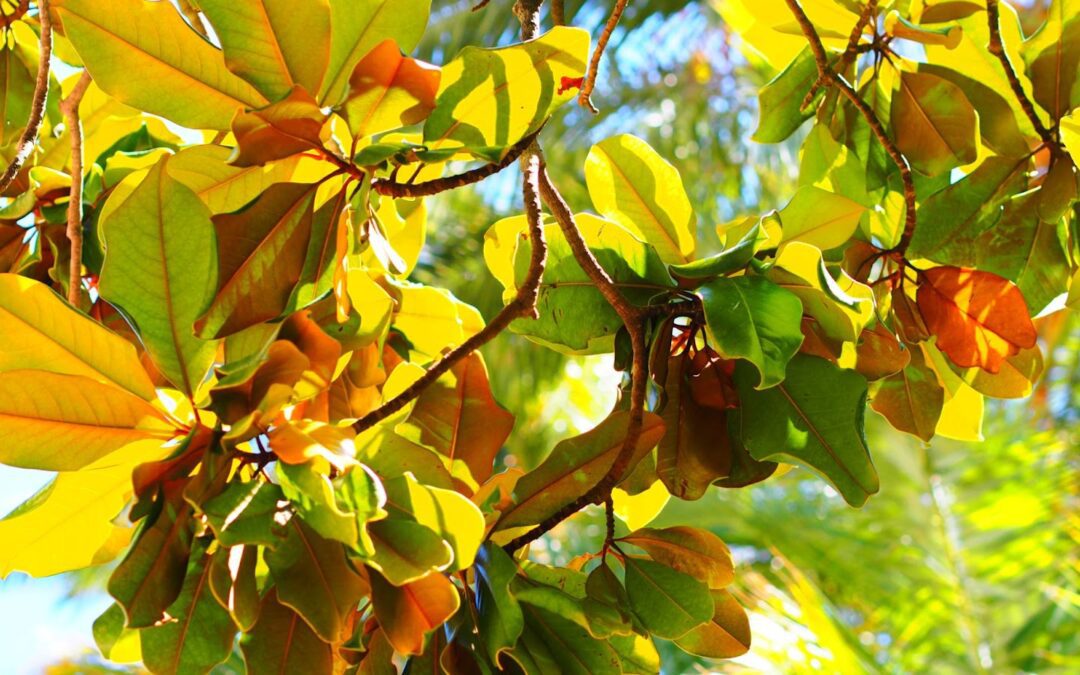Did you know pecan trees grow at a rate of 13 to 24 inches per year? With thousands of mature pecan trees around the US, many groupings of trees can become diseased, sparse and produce erratically. While there can be a variety of reasons a pecan tree dies, or fails to produce nut crop, recognizing a healthy tree when you buy it can save you a lot of time and money. If you’re in need of more specific information, contact Georgia Pecan Nursery today.
If you’ve been looking for tips on how to identify a healthy pecan tree when you buy it, we’ve got you covered! Your tree or orchard is a living breathing organism that needs to be taken care of properly. In order to buy and maintain healthy pecan trees, check out our tips and tricks.
Here’s how to tell if a pecan tree is healthy when you buy it:
- Common Types of Diseases
- How to Identify Pecan Scab
- To Keep a Healthy Tre
Common Types of Diseases
Blotch
One type of pecan tree disease you might find is called blotch. Blotch presents itself as large black or yellowish spots on the leaves. This disease is rarely serious, but in some cases, it can defoliate the average pecan tree. This occurs mostly with drought-stressed trees or zinc deficient trees.
Crown Gall
Presented as brown or white nodules around the roots of the tree, as crown gall progresses, the roots rot and the tree slowly dies. Unfortunately, there is no treatment for this disease, so if you notice issues with the root of your newly purchased tree, you might want to return it or purchase from a different tree farm.
Powdery Mildew
A disease that affects many plant species, powdery mildew appears as a white coating on the leaves, but is rarely serious. Most common in young seedlings, if you purchase a young pecan tree where the condition is severe, treat it with the fungicides recommended for pecan tree scab.
Rosette
Rosette presents as yellowing leaves in the tops of pecan trees. This eventually turns into small leaf production and the death of foliage/branches. As this disease relates to zinc deficiencies, to mitigate the condition, spray the leaves with a solution of 1 tablespoon zinc sulfate per gallon of water.
Pecan Scab
The most common type of pecan tree disease, pecan scab is a type of fungal infection that attacks various parts of the tree. This includes the twigs, leaves, nuts, and shucks. It can come in the forms of lesions and lead to the death of certain tissues. This infection spreads with the help of wind and rain, and the time of year generally affects the prevalence of symptoms as well as the likelihood of spreading the infection to other pecan trees.
Symptoms first start to appear in the early spring, and can reappear in multiple repeating infection cycles throughout the season. Wet conditions are necessary to provide the environment pecan scab needs to spread and grow. The damage pecan scab causes can be long-lasting and severe, which makes it possibly the most economically devastating disease that can impact Georgia pecan trees.
Pecan scab can attack the leaves, leading to defoliation. Infected nuts may be reduced in size and quality, and if the infection occurs when the nut is quite young, this disease could kill the tree altogether.
How to Identify Pecan Scab
The most easily apparent way to identify pecan scab is by finding black spots on the leaves and the shucks of the pecan tree. These lesions will be small, appear dark, and be found on the leaves, shucks, and twigs of the tree. It might not look like much at first — you might even just think your tree is a little dirty — but the lesions can grow larger and start to connect with each other.
The lesions will have a somewhat velvety appearance early on in their lifecycle. However, this will change as they get older. The color will become darker and the area can begin to crack or otherwise degrade. These lesions can persist for multiple seasons with varying degrees of intensity.
To Keep a Healthy Tree
Choose Soil Options Wisely
The soil you choose to plant your Georgia pecan trees in will determine the growth and production of your trees. Keep your plants happy, healthy, and continuously producing by choosing sandy loam soils with well-drained subsoil.
Remember: Fertilizer is Important
Like any other plant, your Georgia pecan trees need to be properly fertilized to maintain pecan production and a healthy foliage. Lack of lime, nitrogen fertilizer and zinc can be types of common limiting factors in full, ripe pecan production. Be sure to fertilize according to your specific soil and leaf sample recommendations.
Pro Tip: Apply fertilizer in March on your larger Georgia pecan trees. For your younger trees, fertilize in March with 13-13-13, lime and zinc. Then, be sure to apply half ammonium nitrate in April, and the other half in June. Broadcast fertilizer on the surface in a circle twice the branch spread of the tree. Remember to choose well-drained soil. This will provide proper drainage for excess water and keep trees watered during dry periods.
Are you ready to purchase a pecan tree? Visit Georgia Pecan Tree Nursery to find your new pecan tree today.

